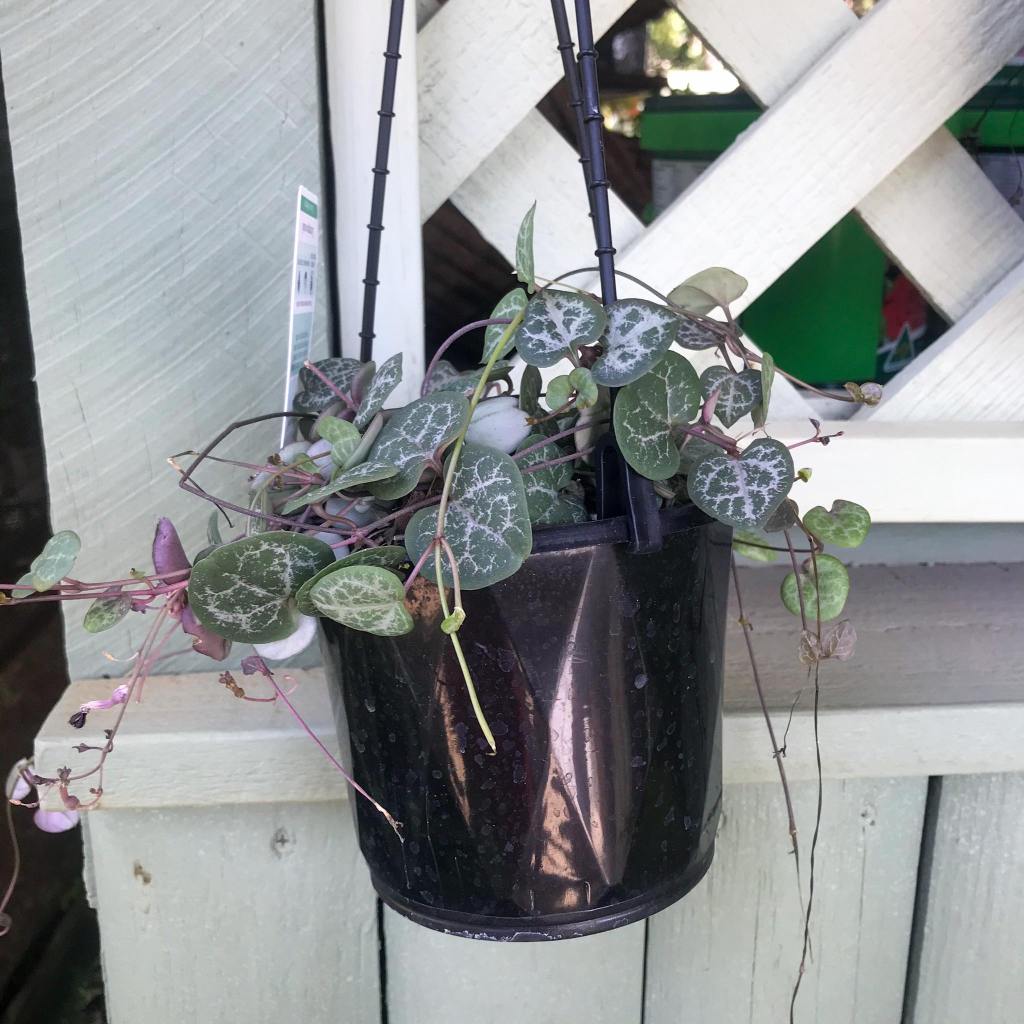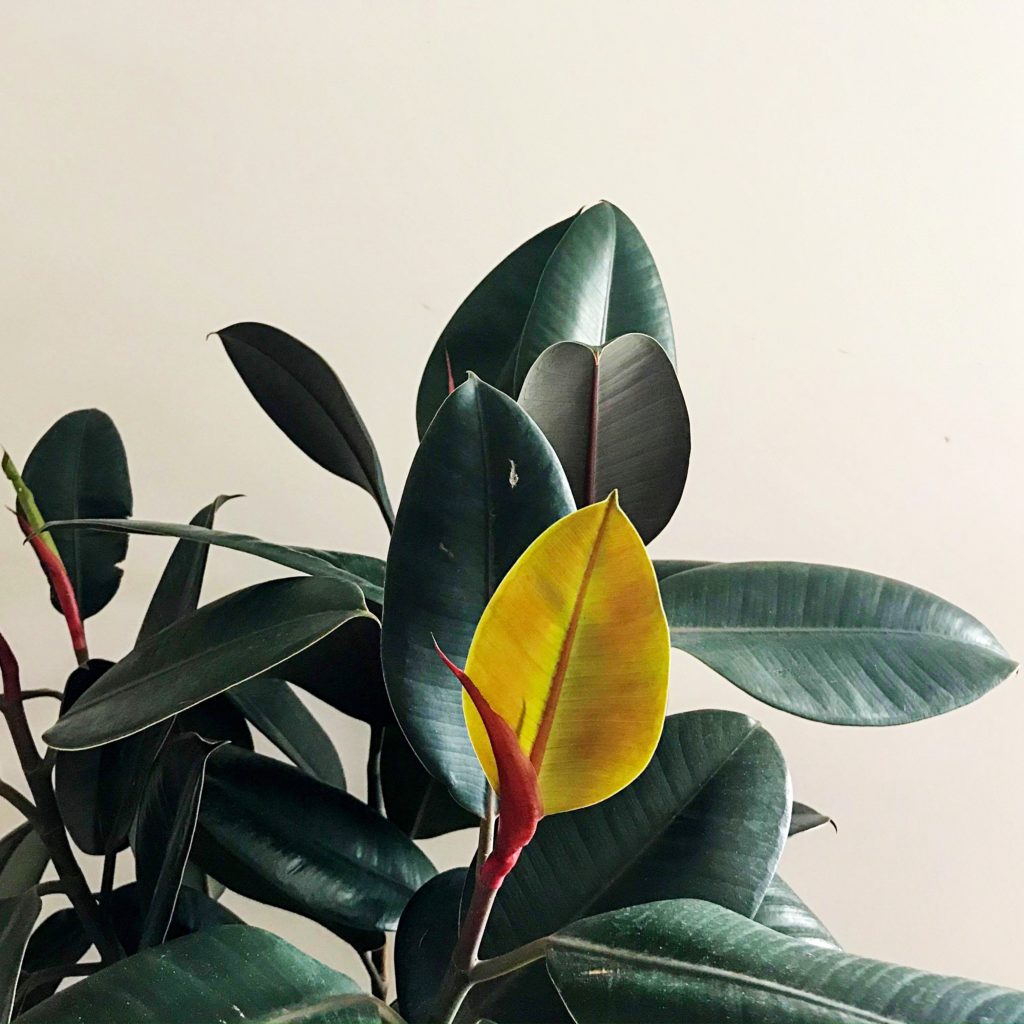The Chain of Hearts plant, scientifically known as Ceropegia Woodii is a beautiful plant commonly known as String of Hearts or Rosary Vine. They are prized for its trailing vines and heart-shaped leaves.
In this all-encompassing guide, we’ll delve into the essentials of nurturing your Chain of Hearts plant indoors, from its identification, size, and light requirements to its soil, water, and humidity needs. Let’s explore the enchanting world of this delightful plant and help it flourish in your indoor jungle!
Ceropegia Woodii a.k.a Chain of Hearts, String of hearts, Rosary Vine

Chain of Hearts Quick Overview
| Full Size | Up to 6 feet |
| Light | Bright indirect |
| Temperature | 65-85°F (18-29°C) |
| Humidity | moderate (40-60%) |
| Cost | $ |
| Care Level | Easy |
| Toxicity | Non-Toxic |
Identification
The Chain of Hearts plant is easily identifiable by its cascading vines adorned with small, heart-shaped leaves. These charming leaves are typically green with a silver marbling effect on the surface and a purple or magenta hue on the underside.
Its delicate, tubular flowers often emerge in late summer or early autumn, adding an extra touch of allure to this already captivating plant. The Chain of Hearts has a similar trailing growth habit to other indoor plants like the String of Pearls (Senecio rowleyanus) and String of Bananas (Senecio radicans).
Size
The Chain of Hearts is a relatively small plant, with its leaves measuring approximately 1-2 inches in length. Its vines, however, can grow quite long, sometimes reaching lengths of 6 feet or more.
This makes the plant an excellent choice for hanging baskets or elevated planters, where its trailing vines can be displayed to full effect.
The growth rate of the Chain of Hearts is moderate, allowing it to fill out a space over time without becoming overwhelming.
Light Requirements
The Chain of Hearts appreciates bright, indirect light, which promotes healthy growth and vibrant leaf colors. A spot near an east or west-facing window is ideal, allowing the plant to receive plenty of light without being exposed to harsh direct sunlight.
In rooms with south-facing windows, it’s best to place the plant a few feet away from the window or use sheer curtains to filter the light. Avoid placing your plant in low-light areas, as this can result in weak, leggy growth.
Temperature Requirements
This versatile plant thrives in a wide range of temperatures, from 65-85°F (18-29°C). It is essential, however, to keep it away from drafts, air conditioning vents, or heaters, as sudden temperature fluctuations can cause stress.
During the colder months, ensure that the temperature remains above 55°F (13°C) to support healthy growth.
Humidity Requirements
The Chain of Hearts plant prefers moderate humidity levels of around 40-60%. In most indoor environments, the plant will adapt without any additional measures.
However, if the air is particularly dry, you can increase humidity by placing the plant on a tray filled with pebbles and water, or by using a humidifier.
Watering Requirements
Water your Chain of Hearts sparingly, allowing the soil to dry out between watering. Overwatering can lead to root rot and other issues, so it’s crucial to err on the side of caution.
During the growing season (spring and summer), you may need to water the plant more frequently, while in the fall and winter, reduce the frequency to prevent soggy soil.
Signs of overwatering include yellowing leaves and mushy stems, while underwatering may result in wrinkled leaves or leaf drop.
Fertilizing Requirements
Feed your Chain of Hearts with a balanced, water-soluble fertilizer diluted to half strength every 4-6 weeks during the growing season.
Avoid fertilizing in the fall and winter, when the plant’s growth slows. Over-fertilizing can lead to excessive growth or burnt foliage, while under-fertilizing may cause weak growth and fewer flowers.
Soil Requirements
The Chain of Hearts prefers well-draining soil, such as a sandy or succulent mix, to prevent root rot and promote healthy growth.
You can create a suitable mix by combining equal parts potting soil, coarse sand, and perlite or pumice. Ensure your chosen pot has drainage holes to allow excess water to escape.
Diseases & Pests
The Chain of Hearts plant may be susceptible to common indoor plant diseases and pests, such as:
- Root rot (caused by overwatering)
- Mealybugs
- Spider mites
To prevent these issues, maintain proper watering practices, ensure good air circulation around the plant, and keep the leaves clean. Treat any infestations with insecticidal soap or neem oil.
Toxicity
The Chain of Hearts plant is non-toxic to humans and pets, making it a worry-free addition to your indoor plant collection. However, it’s always a good idea to keep plants out of reach of curious pets or small children.
Common Problems
Some common problems faced by the Chain of Hearts plant include:
- Yellowing leaves: Often a sign of overwatering or poor drainage.
- Wrinkled leaves: Usually indicate underwatering or low humidity.
- Leggy growth: Can be caused by insufficient light or excessive fertilization.
To address these issues, adjust your care routine accordingly and ensure your plant’s growing conditions are optimal.
Overall the Chain of Hearts plant is an enchanting and low-maintenance addition to any indoor space. By following this guide, you can provide the optimal care required for your Chain of Hearts to thrive.
If you’re captivated by this plant, consider exploring other trailing plants like the String of Pearls or String of Bananas for more fascinating foliage and unique growth habits.



